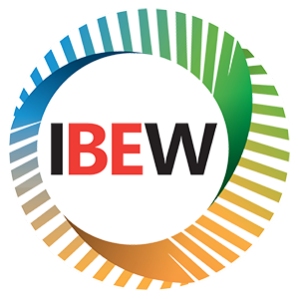5 September (Thu)
10.30am – 4.00pm
BEX Asia Main Stage, Level 1
Marina Bay Sands, Singapore (Google Map)
SGBC Seminar
Join us for an insightful SGBC Seminar on 5 September 2024 to explore the latest advancements in green building solutions. The Seminar will feature a series of curated presentations from SGBC Pavilion exhibitors, showcasing a diverse range of innovative solutions and technologies focused on built environment sustainability.
Gain insights on the evolution of the built environment while seamlessly fulfilling the industry accreditation requirements. Seating is on a first-come-first-served basis and are subject to availability.
This session is complimentary to all IBEW conference Delegate pass holders.
Programme
Time
Agenda
10.30 AM
Total Cost of Ownership (TCO) Concept in Air Filters
by Airmaze Corporation Pte Ltd
In building HVAC systems, filter replacement cost contributes to approximately 30% of annual operating costs. By convention, the facilities management team will only look at filter costs. In fact, there are tangible and intangible factors that contribute to this overall cost, which have often been neglected.
Samuel Tan
Director, Airmaze Corporation Pte Ltd
Certified Air Filter Specialist (CAFS) by NAFA, USA
11.00 AM
Enabling Sustainability in Buildings
by Honeywell Pte. Ltd.
The presentation will cover implementing advanced technologies and designs to reduce energy consumption and enhance building performance.
Jeffrey Yap
Sales Director – Rest of Asia, Honeywell Building Automation
11.30 AM
Digital Twins: Future of Green Buildings
by HY M&E Consultancy Services Pte. Ltd.
This presentation explores the transformative potential of digital twin technology in the construction and operation of environmentally sustainable buildings. Digital twins are virtual replicas of physical assets, systems, or processes, enabling real-time monitoring, simulation, and optimization. By integrating Internet of Things (IoT) devices, sensors, and advanced analytics, digital twins offer actionable insights for architects, engineers, and facility managers, paving the way for innovative solutions in green building design and management.
As technology advances, digital twins will become even more sophisticated, incorporating artificial intelligence and machine learning to optimise building operations autonomously. This will unlock new levels of efficiency and sustainability, making digital twins an indispensable tool in the quest for a greener built environment.
Rowena Rawte
Global Head of Sustainability, HY M&E Consultancy Services Pte. Ltd.
1.30 PM
Maximising the Potential of Light to Achieve Sustainability Goals
by Signify Singapore
In the pursuit of sustainability, harnessing the potential of light emerges as a pivotal strategy. This approach encompasses the innovative use of light to reduce energy consumption, enhance renewable energy production and improve environmental and human wellbeing. By maximising the potential of light, we can create a more sustainable future, reducing our carbon footprint, conserving resources, and fostering environments that support both human and ecological health. This holistic approach aligns technological innovation with environmental stewardship, driving progress toward global sustainability goals.
Vijay Venkatsubramanian
ASEAN Team Leader Specification Sales, Signify
2.00 PM
Demystifying Green Network Cables: Environmental Impact and Performance
by Panduit Singapore Pte Ltd
Dennis Sim
Regional Technical Manager, Panduit Singapore Pte Ltd
2.30 PM
Data Driven Human-Centred Design
by Nanyang Polytechnic (NYP)
Data is at the centre of modern decision making. Digital twins, which basically are real-time replications of a physical asset, a manufacturing floor – or in this case, a building, can be used to run analyses. These could be about energy consumption, how efficient processes are, whether there are logjams in the production process or in people. Currently many buildings in Singapore are used ‘as is’ with a lack of analytical data that can be used to analyse sustainability considerations such as improvements in energy and water usage in tandem with user-behaviours and indoor environmental conditions.
With the NYP-Anacle Digital Twin research project, both organisations aim to build a system that can be prototyped and applied to buildings for such analysis. This project aims to go beyond the analysis of environmental/IAQ-to-energy usage, but focus on the capturing and monitoring of human-centred/user behavioural data through the Digital Twin to inform / provide insights to human-centred design strategies. The Project will leverage on AI technology to learn from the acquired data and be used to predict the energy, process or people flows through data simulations.
Ar. Ron Tang
Lecturer, Nanyang Polytechnic
Xavier Tay
Principal Consultant (Digital Twin), Anacle
3.00 PM
Decarbonising Construction & Manufacturing
by One Click LCA Ltd.
In this presentation, OneClick LCA will share key developments in decarbonising the construction and manufacturing sectors. They will discuss strategies for enhancing sustainability throughout the construction value chain, focusing on life-cycle assessment (LCA) and environmental product declarations (EPDs) to measure and mitigate the environmental impacts of building, infrastructure, and renovation projects and products. Additionally, OneClick LCA will briefly cover biodiversity and microclimate analysis.
Raymond Chan
BD Engineer, OneClick LCA
3.30 PM
How To Identify & Minimise the Impact of Materials without Compromising on System Performance
by Knauf Singapore Pte. Ltd.
This presentation will help participants understand how to identify and minimise the environmental impact of building materials such as plasterboard and insulation without compromising building system performance. It will cover the importance of reducing embodied carbon alongside operational carbon; the role of material selection in reducing embodied carbon, the differences in the types of environmental claims made by product manufacturers, and the role of life cycle analysis in providing specifiers with the information needed to accurately assess products during selection. The presentation will also elaborate on how to interpret Environmental Product Declarations (EPD’s) to calculate the embodied carbon content of a product, and the implications of chosen materials, components and systems.
Stephen Smith
Technical Director, Knauf Insulation Asia Pacific
